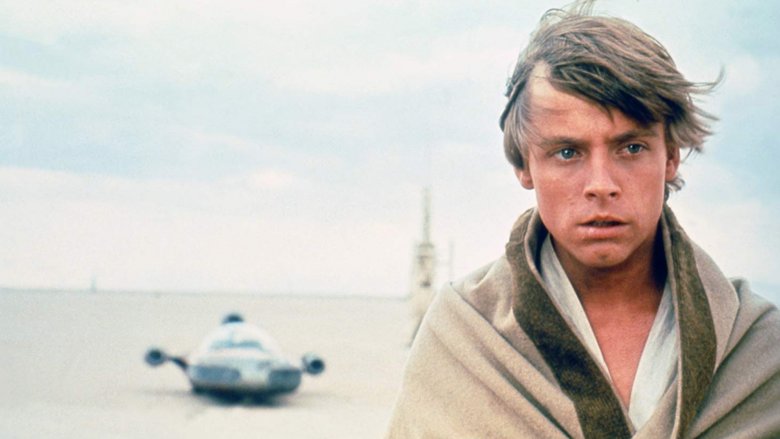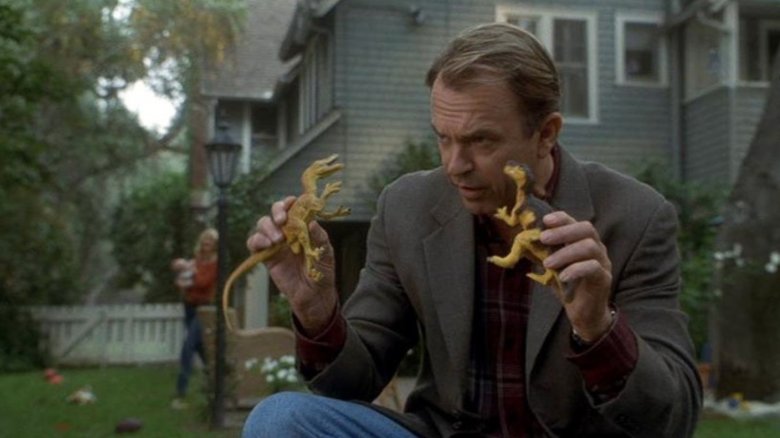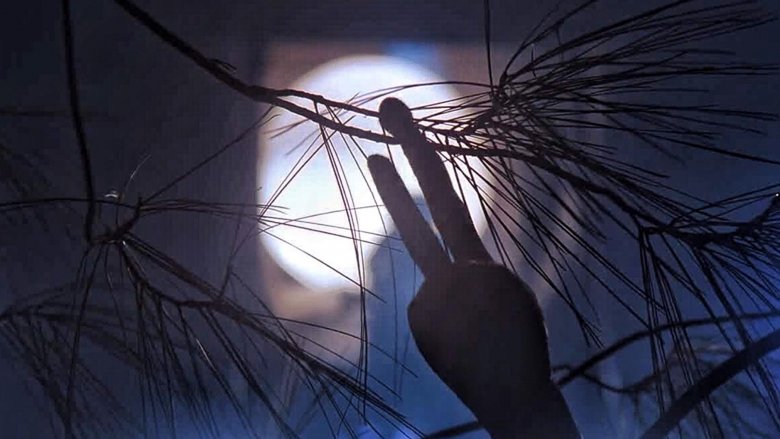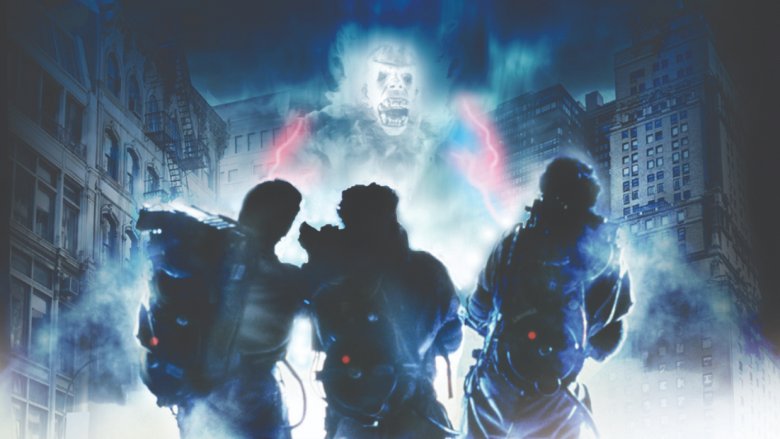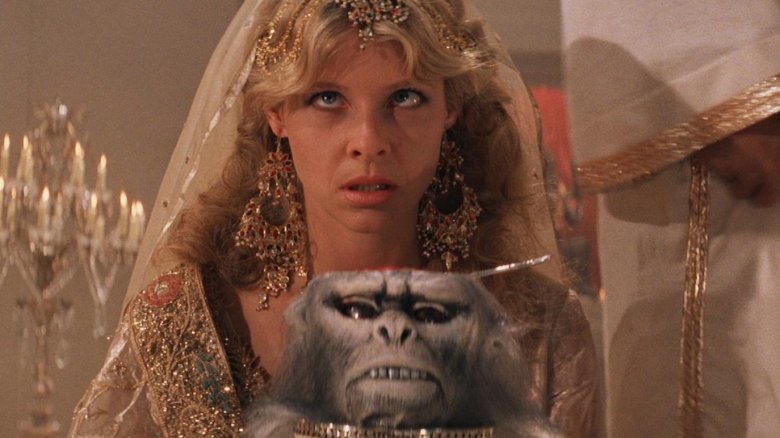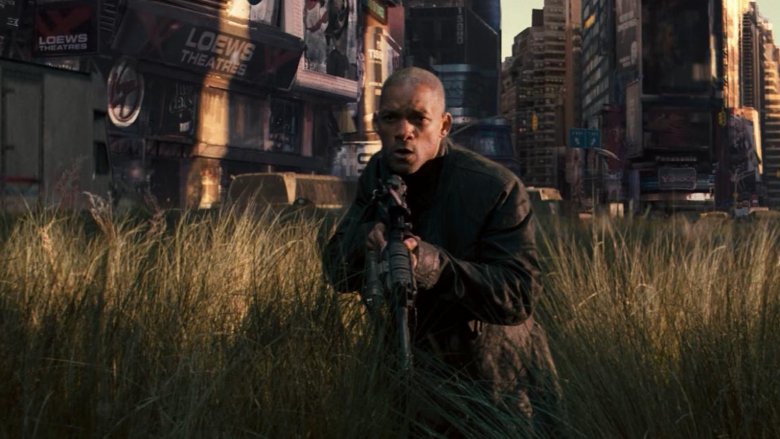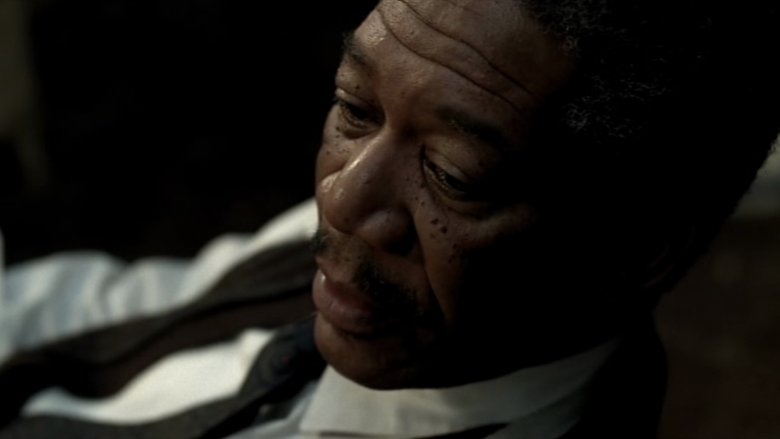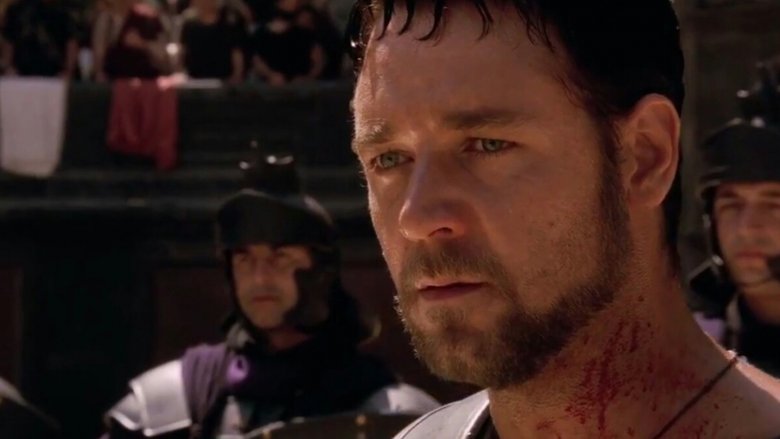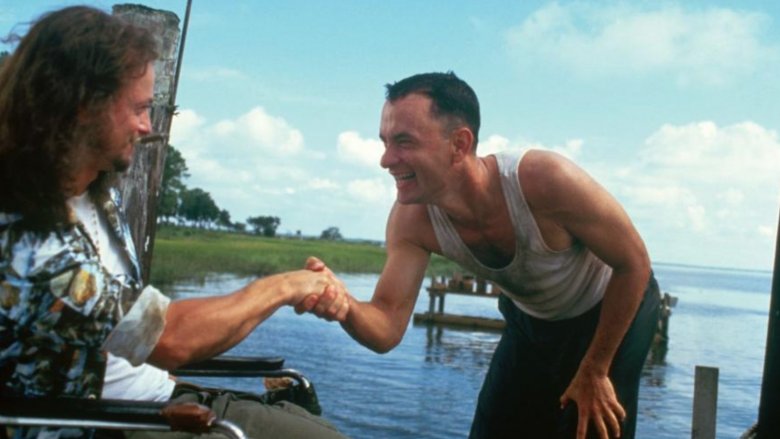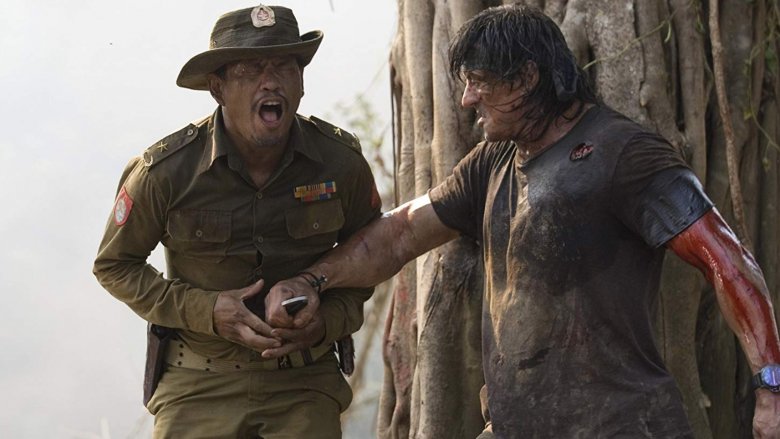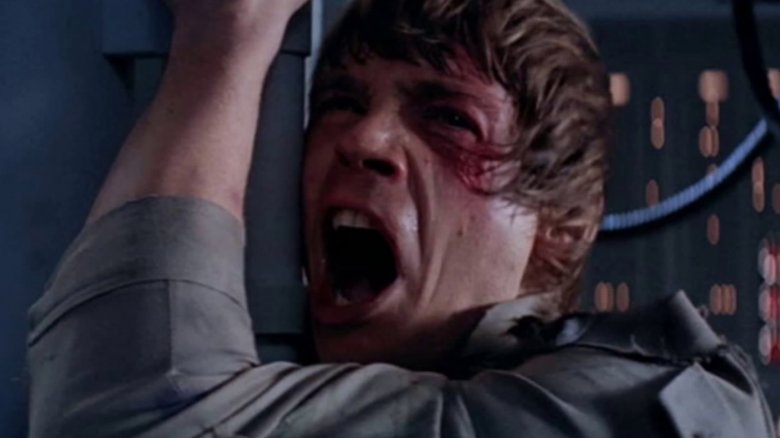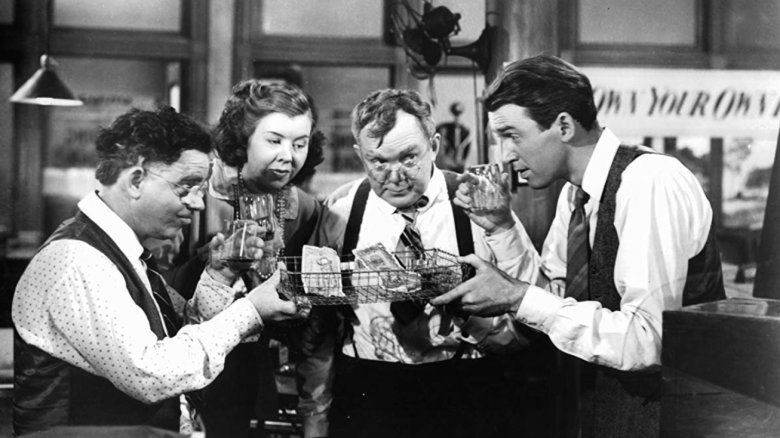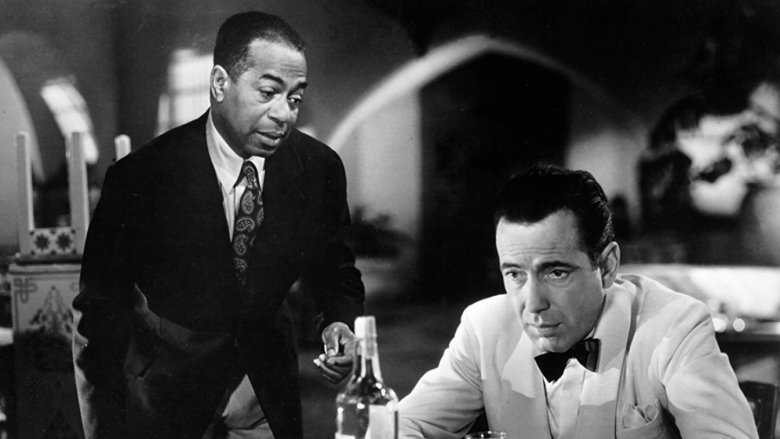Sequels We're Glad Never Happened
Hollywood is a pretty risk-averse place. More often than not, movie execs would rather cash in on success than try something new. If a movie makes money, it only makes sense to produce a sequel... or ten. And spinoffs. Maybe a cartoon, too. And then, once the franchise stops making money, reboot it all again in five years or so. No wonder filmgoers complain about the complete lack of creativity coming from the movie industry.
But if there's one thing even worse than a lack of creativity, it's too much creativity. This list of insane sequel ideas proves it. It's unfathomable to believe that some of the world's most gifted filmmakers almost managed to talk multi-billion dollar corporations into spending millions of dollars and man-hours to produce these potential sequels. Meanwhile, the rest of us have to beg our bosses for different flavors of K-Cups.
Thankfully, these sequels did not happen. But who knows? Audiences have a voracious appetite for familiarity and Hollywood is all too happy to oblige. Maybe we will see these sequels someday. In the meantime, we can only watch (and shudder) at what might have been. Here are the sequels we're glad never happened.
Human-Dinos, the idea that just won't go extinct
You'd think a franchise with 200 million years of backstory would have no problem coming up with plots. Nevertheless, the Jurassic Park franchise has been as focused on bioengineered super-dinos as a Dilophosaurus on Dennis Nedry. The big bad in Jurassic World was the Indominus Rex, basically a T-Rex with raptor DNA, while Jurassic World: Fallen Kingdom featured the Indo-Raptor, a raptor crossed with Freddy Krueger. Pretty out there. But believe it or not, it could have been a lot weirder.
Despite the diminished returns of Jurassic Park III, which featured the "Jump-the-Shark" moment of a talking raptor in a dream sequence, the producers doubled-down on anthropomorphic prehistoric reptiles with Human-Dino hybrids. Yes, Jurassic Park turns into the Island of Dr. Moreau. Back In 2005, the proposed story for the fourth film was a secret genetics lab that cross-bred humans with dinosaurs, creating hybrids capable of solving complex problems and firing automatic weapons... and probably inspiring a lot of toys too.
This wasn't just some concept filmmakers mused about while getting high on shrooms. The idea got far enough along that a script was written (by Oscar winner William Monahan and Oscar nominee John Sayles no less), and concept art was developed. The pics are... interesting. We're definitely getting a We're Back vibe. Thankfully, the human-dino hybrids idea went extinct, but don't get too cozy. In Hollywood, to paraphrase Dr. Ian Malcolm, lunacy finds a way.
Evil E.T. #childhoodruined
"E.T. would be so much better if it were dark, depressing and freaking terrifying," said nobody ever. Well, nobody except for Steven Spielberg, apparently.
Some backstory: Steven Spielberg had refused to make a sequel to Close Encounters of the Third Kind, but offered up an alternative: a movie that mixed the horror of Jaws with extraterrestrials of Close Encounters. The result was Watch the Skies, penned again by John Sayles (who seems to get all the worst assignments). That film was abandoned, though elements remained in E.T. the Extraterrestrial, which presents a much kinder, gentler alien, resulting in critical and commercial glory. So much so, Universal wanted a sequel. Surprisingly, Spielberg was on board. He and E.T. screenwriter Melissa Mathison penned a treatment that had that lovable little guy E.T. being part of a warring alien race whose evil albino members have imprisoned other alien races from across the galaxy for food... uh, what?
Yes, that's exactly what Spielberg planned for E.T. II: Nocturnal Fears. Now, E.T. isn't all sunshine, unicorns and rainbows — it's actually a compelling examination of the effect of divorce on a family — but still, carnivorous mutant E.T.'s? Is that what the franchise needed? Phone home? More like phone your therapist.
Ghosbusters in Hell
Big fan of Ernest Goes To Camp? Then you'll love Ghostbusters Go To Hell!
Longtime Ghostbusters buffs might know that a potential third entry in the franchise, discussed for many years, would have found everyone's favorite haunted hunters taking a trip down to the underworld to visit Satan's homestead. The name of this film was going to be Ghostbusters 3: Hellbent, though its version of Hell would not feature your standard lake of fire and molten brimstone. The idea was that Hell was actually an alternate, evil(er) version of Manhattan — called ManHELLton — where the crew would even meet up with the devil himself, a Donald Trump-like character named Mr. Siffler.
While the "Ghostbusters in Hell" pitch is well-known, what's less well-known is that the idea actually goes back much further, to the first film. In early drafts of the story, the Ghostbusters made it to the gates of Hell, which were even designed by concept artist Bernie Wrightson of Heavy Metal and Swamp Thing. The trip to Hell idea was abandoned for the first film but kept on coming back well into the 2000s as Dan Aykroyd continued toiling away on the script. Alas, "Ghostbusters in Hell" has remained in developmental hell, presumably never to escape its fate.
Monkeys? Why'd it have to be monkeys?
Man, if you thought Indiana Jones and The Kingdom of the Crystal Skull was bonkers, hold our beer. The original pitch for a third film (before Indiana Jones and The Last Crusade) was as crazy as its title — Indiana Jones and the Monkey King. The story was conceived by three of the greatest blockbuster minds ever: Steven Spielberg, George Lucas, and Home Alone director Chris Columbus. Columbus, then riding high from writing Gremlins and The Goonies, was hired to pen the script, which begins with Indy fighting a ghost in Scotland. When your film starts with ghost fights, where else do you go? To much, much crazier places, it turns out.
Indy and friends are seeking the mythical city of the Monkey King, whose enchanted orchard contains fruit that will grant eternal life. In typical Indy movie fashion, he must fight Nazis along the way. In not-so-typical fashion, the Nazis have machine gun arms and Indy's saved by tank-driving gorillas. Indy even rides a rhinoceros. It's pretty intense.
Despite everything he's survived before, in this film, Indiana Jones actually dies... temporarily. Because he's pure of heart, Indy's brought back to life by the magical fruit of the Monkey King. And yes, the half-man, half-monkey, all-skeleton Monkey King does appear. Had Monkey King happened, the Indiana Jones franchise would have "Nuked the Fridge" much earlier. Except instead the phrase would have been "Rode the Rhino" or "Fought the Ghost."
I Am (Still) Legend
Before he broke the interwebs by painting his body blue to play the Genie in Shazam II: Electric Boogaloo (err, Disney's Aladdin), Will Smith was about as sure a thing as you could get at the box office. Case in point: I Am Legend. Smith's star power carried this horror/action hybrid to become the biggest hit of the 2007 holiday season. Nothing says holly jolly family fun like the last man on earth battling an undead army. Given that the film made bank, Warner Bros. naturally wanted a sequel with Smith starring. There was one problem: (*spoiler alert*) Will Smith's character dies.
Not to be deterred by a little thing like the main character being dead, WB proceeded onward. The first solution was to make a prequel. Because I Am Legend was about the human population being wiped out due to a zombie infection, the prequel would find Smith's lone survivor Dr. Neville just before the world ended. Perhaps it would have been titled I Am (Not) Legend (Yet).
That idea was so-so, but perhaps it just wasn't wacky enough for the suits at Warners. So a scenario for a sequel was developed where Smith's character would come back as a clone. Kooky, yes, but there was precedent for this. Alien: Resurrection brought back Ripley 2.0 as a clone after her fiery demise in Alien 3. Fortunately, I Am Legend 2 didn't follow suit, so for now the film remains just that: a legend.
An idea so dumb it's sinful
This is the one abandoned sequel idea that actually became a movie (more on that in a sec). The sequel to Se7en was going to be titled Ei8ht, because of course it was. Unlike I Am Legend, which wanted to bring back its dead lead, Ei8ht was content with leaving Brad Pitt's character offscreen. Don't assume this means the sequel wasn't going to be ridiculous — far from it. In Ei8ht, Morgan Freeman's world-weary detective continues to hunt serial killers, but discovers he has the ability to predict the future. This concept got far enough along that a script was actually written. In a 2005 interview, David Fincher said, "I read a script two or three years ago... they wanted Morgan to have become clairvoyant in some way and that was the way he was now solving serial-killer cases! And I was like, 'Well, that's handy.'"
You don't need to be see the future to know this would have been a very bad idea. A sequel to Se7en isn't bad in theory, but giving Freeman supernatural abilities is ludicrous. While the sequel never happened, the story did. Much of the screenplay was repurposed for 2015's Solace, a movie about a psychic solving crimes starring Colin Farrell and Anthony Hopkins. Despite the talent attached, Solace bombed, so we don't have to worry about anyone making N9ne.
Maximus melds with Roman gods
What is it with sequels to movies where the main character dies? While Gladiator may not have aged well (the Roman Empire has aged better, actually) Ridley Scott's 2000 swords-and-sandals epic took home Best Picture and box office gold. Russell Crowe also won Best Actor for his performance as Maximus Aurelius, his crowning moment in a career that has been spotty at times. One of those spotty times was in the mid-to-late 2000s, after the biggest bomb of his and Ridley Scott's respective careers, 2006's A Good Year. Perhaps hoping to revive past glory, Crowe wanted to be in a Gladiator sequel. Okay, cool, but Maximus died, remember?
NBD. Just throw some Roman mythology on it. Scott and Crowe hired Australian musician and screenwriter Nick Cave to come up with a creative solution to bring back Maximus. Well, Cave certainly did that. Cave's Gladiator 2 had Maximus melding with Roman gods to achieve immortality. He is then reincarnated on Earth, where he defends the early Christians and goes on to fight in various conflicts, including World War II and the Vietnam War, eventually rising through the ranks of the modern-day Pentagon. Those cushy government pensions come in handy when you live forever.
While this story idea was rightly abandoned, there's still momentum for a different Gladiator sequel, this time focused on Lucius, the kid from the first movie, now an adult. One thing we can say for Cave's Gladiator 2 — we most certainly would have been entertained.
"Run (away from this movie), Forrest, Run!"
To be fair, describing Forrest Gump's plot makes it sound kinda nuts. Tom Hanks plays a man with a 75 IQ who experiences almost every momentous event in American history between 1950 and 1981, from teaching Elvis to dance to calling the police during Watergate. Sounds wacky, but the film functions as a fable and it works. So much so that it won Best Picture and Tom Hanks his second Oscar for Best Actor.
Even with that primer, Forrest Gump II sounds genuinely insane. Where to begin? Well, Forrest goes broke and plays for the New Orleans Saints. He invents the formula for New Coke and also creates a power plant fueled by pig poo (the two have remarkably similar flavors). He crashes the Exxon Valdez, rides in the back of OJ's Bronco, and works for NASA. There, he befriends an orangutan named Sue, who joins him in Operation Desert Storm.
If life is like a box of chocolates, Forrest Gump II is like a bag of Necco Wafers — it's all awful. While the first film managed to seamlessly weave this one man throughout American history, the proposed sequel did so with all of the subtlety of Lt. Dan hosting a children's show. The whole thing is just awkward. Despite all of the history we've experienced in the past 40 years, hopefully we'll never see a movie where Forrest buys a subprime mortgage or builds a wall.
Rambo vs. Monster
Since coming home from Vietnam, John Rambo has battled Vietnamese forces, Soviet soldiers, the Burmese army, and American rednecks. This fall, he'll battle Mexican drug cartels. With that lineup of victories, what human enemy is left for the one-man army to take down? Well, maybe it's not human at all.
Rambo V was originally set to pit Stallone's super-soldier against a half-man, half-beast, pure killing machine. Rambo V: The Savage Hunt has Rambo sent to the Pacific Northwest to clean up the mess after a top-secret government experiment creates an out-of-control monster. And yes, it is indeed a monster.
"It's not a Universal Soldier... it's not me fighting a super soldier... it's actually a feral beast," Stallone said in 2009. "It's this amalgamation of fury and intelligence and pure, unadulterated rage. [Rambo's] going against a feral beast that has absolute cunning and intelligence and a will to survive that is only matched by Rambo's."
Yes, please! Seriously, this might be the one sequel on this list that we almost wish did happen. All due respect to Rambo, but it's not like this franchise has some prestigious reputation to maintain. Might as well go as awesomely insane as possible, right? Alas, Rambo V: The Savage Hunt was abandoned in favor of the Rambo V. Maybe, just maybe, it'll do well enough to make Rambo vs. Monster happen. Fingers crossed!
Before Empire, there was Mind's Eye
A long time ago, in a galaxy far, far away (the 1970s), George Lucas made plans for a Star Wars sequel that wasn't part of his original vision. Long before Team Disney took over, even before the movie that would eventually be called A New Hope was released, Lucas gave partial creative control of his space opera to Alan Dean Foster. Foster was hired in 1976 to pen the novelization of Star Wars, as well as a second book which Lucas could use for a potential follow-up. That book was the first official Star Wars sequel, Star Wars: Splinter of the Mind's Eye. Lucas' only restriction was that the story could be filmed on a low budget so he could reuse props and sets.
Splinter finds Luke, Leia, C-3PO, and R2-D2 stranded on a dark, foggy mining world named Mimibian, which contains a powerful crystal sought by the Empire. Vader shows up only briefly for the grand finale fight, while Han and Chewie don't show up at all, as Harrison Ford was only contracted for one Star Wars. Luke and Leia's relationship also has romantic undertones throughout, meaning perhaps they weren't siblings in this version of the story. Splinter is a cool idea, but was basically Lucas' backup plan in case Star Wars only did so-so. Of course, it became the highest-grossing film of all time at that point, launching arguably the most popular franchise in history and allowing Lucas to film his saga as he had planned it from the start.
Episode II: Mr. Potter Strikes Back!
Not even all-time classics are immune from Hollywood's lust for sequels. Case in point: It's A Wonderful Life II. It's an idea that leaves us with one question: why? Just... why?
The planned title was actually It's a Wonderful Life: The Rest of the Story, which is somehow an even more uninspiring title than just adding the Roman numeral II. In IAWLTROTS, George Bailey's grandson (also George) becomes essentially like Mr. Potter: selfish, greedy, and unkind. Before all hope is lost, an angel shows new George what the world would have been like had he never been born. Basically it's a combination of Christmas mainstays It's A Wonderful Life and A Christmas Carol, which is kinda like mixing eggnog and wassail. Bad idea.
The film was announced in Variety in 2013, with a planned 2015 holiday release date, but that never came to pass. Why was the sequel canceled? Turns out that the filmmakers' belief that the original was in the public domain (and thus fair game for follow-ups) was incorrect. It had been in the public domain for many years (at least, its images had been, if not its story — it's complicated), leading to the frequent TV showings that cemented its status as a classic. However, since 1993, it had actually been in the possession of Paramount, who didn't take kindly to the potential follow-up. Then again, would any of us?
You Must Forget This
Of all the movies in all the world, why did Warner Bros. have to try to make a sequel to this one? Casablanca is near the top of most Best Films Ever lists. So it's no surprise that during the past 70-plus years, there have been numerous attempts to film a sequel.
The first was Brazzaville, named after the location of the Free French garrison mentioned at the end of the movie. Brazzaville was announced by Warner Bros. in the 1940s, and a treatment was even written. Picking up where Casablanca left off, we learn the iconically laconic Rick Blaine was actually an Allied agent all along. This would retcon the most famous morally ambiguous character in all of moviedom, destroying his entire arc in Casablanca.
While Rick Blaine made appearances on the small screen and in novels, the issue with an official movie sequel was that you simply cannot replace Humphrey Bogart (or, for that matter, any of the other actors). Howard Koch, one of the original film's three credited writers, understood this. His 1988 synopsis for Return to Casablanca focused on Richard, the son of Rick and Ilsa. Following his mother's death in 1961, Richard goes to Casablanca, where he was conceived, to find his father. The idea isn't bad, just unnecessary. Who's the audience for this anyway? Film buffs don't want a sequel and mainstream moviegoers don't care. Much like Rick and Ilsa's romance, some things belong in the past.
